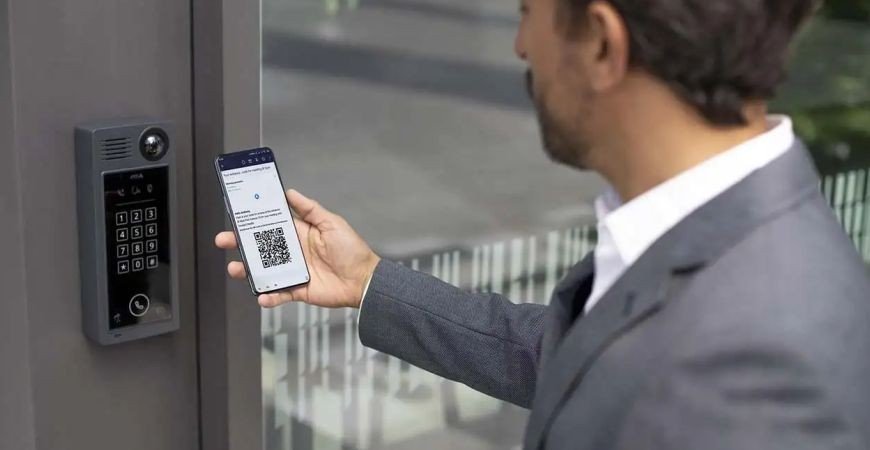
How do QR codes add value to access control systems?
QR codes (Quick Response code) have been around since the mid-1990s, but since the pandemic, many of us have been using them. In addition, we use them much more often because it is a simple method that allows us to see more extensive information just by using our mobile phone. You can find them in restaurants as a digital menu, in the sky by drones as an input to augmented reality, as a payment method or even on mountain trails to check hiking routes. QR codes have a wide range of uses, but few people know that QR codes can also be used to control access to office and office buildings, car parks, museums and art galleries, hotel rooms and tourist apartments.
How does a QR code work?
The two-dimensional nature of QR codes, which can be read by a smartphone camera or a special reader, allows you to store more data than a standard barcode. This specification and flexibility allows effective management of access control, where the QR code is used as authentication data. The system can quickly and easily generate a unique QR code for anyone, which can be configured to allow access to the building for a limited time and define the maximum number of uses. The generated QR code is sent by email directly to the recipient, who can view it on the smartphone screen or print it if necessary.
What are the advantages and disadvantages of using QR codes?
The use of QR codes in the field of access control brings a series of advantages. First of all, the management of the code as confirmation in the access control system is quite simple compared to traditional cards. QR code can be generated, distributed, updated and revoked in seconds from anywhere, providing a highly efficient solution to manage the entire system. It's also very convenient to use, responding to the priorities of mobile early adopters. For example, an external guest receives a QR code on their smartphone, which allows them to enter the premises or the parking lot without having to stop at the reception. Another typical scenario is the management of deliveries that are made outside of strict office hours. A provider that has a QR code on their mobile device can display it in front of a QR reader or a video door entry panel to access restricted areas of the facility. One of the main disadvantages of using a QR code is the risk of duplicating credentials, such as a screen copy, photocopy or even video recording.
Summary
The QR code is a safe, fast and simple solution to enter restricted areas or zones for a single time or for a limited time. However, for regular and repeated entry, usually by employees, for example, other access control technologies are certainly more suitable.

